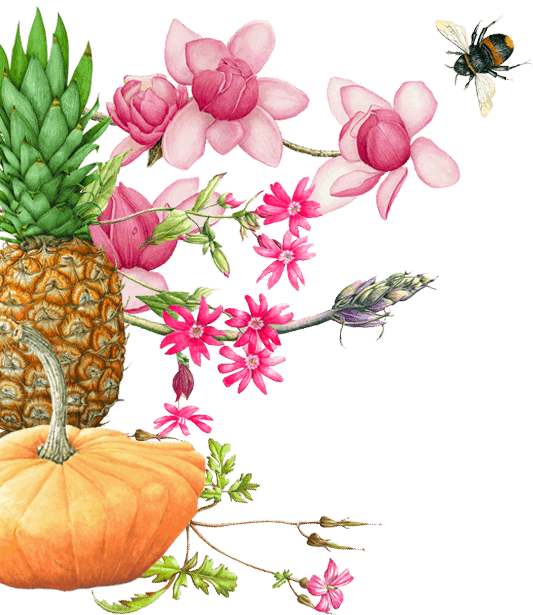The Story of the £10,000 Pineapple
- 23rd Dec 2012
Rare, exotic and hard to grow, Pineapples were a symbol of great status and wealth in Victorian times. A pineapple on your dining table meant you were a person of discernment, style and affluence.
We believe that we have the only working, manure-heated pineapple pit in Britain today. It was unearthed in 1991 and architectural and horticultural historians spent many months researching the history of its construction and technology. The first structure here was probably built in the eighteenth century.
It took three years of anxious nurture before we spotted the first flower bud. HRH Prince Charles stopped to admire it on a private visit to the gardens in June 1997 and by October that year we finally celebrated our first harvest. It was the second pineapple that was delivered to Her Majesty Queen Elizabeth II on the occasion of her 50th wedding anniversary, for we elected to sample the first one ourselves – in case it tasted of manure! Needless to say, it was delicious.
The art of pit management was lost with the demise of the apprentice system and, in the absence of written instruction, our staff had to learn through trial and error. Control of temperature and humidity are all important and the plants must not be over watered. Frequent changes of fresh horse manure are essential to keep up the temperature during cold periods and emptying and re-filling the trenches, either side of the pit, are tough and unpleasant manual tasks. These trenches are covered with boarding to maximise the delivery of heat into the pit itself, through holes in their double-skinned walls. With the days of horse-power long passed it is increasingly difficult to source the quality - and expensive to transport the quantity - of freshly rotting horse manure required for a whole winter's heating.
Some of our words seem to have changed in the transition from interview to news story, so we should probably answer a few of your questions.
How much is each pineapple worth?
Pineapples are a very labour intensive fruit to grow. The current variegated variety which is now ready to harvest took five years before it even began to fruit, then another two to grow the fruit. With man hours to it has taken to look after the pineapple, transport costs of manure, maintenance of the pineapple pits and other little bits and pieces, each pineapple would probably cost us in excess of £1000.
We don’t sell our pineapples; they are shared between our staff to thank them for their hard work over the pineapple’s life span. If we were to auction a pineapple for charity, we feel that the right bidder could bid up to £10,000 for charity. This is only a guesstimate and we could be wrong but this would be a once in a lifetime opportunity that very few people have the opportunity to experience.
Are the pineapples really soaked in urine?
The pineapple pits are heated by fresh horse manure but the pineapples themselves do not come into contact with any manure or urine at any stage. Manure is loaded into manure trenches behind and in front of the pit itself. The heat generated from the manure travels through the hollow walls and through the bark beneath the potted plants to recreate a tropical environment for them to grow in.
Why do we do it?
Here at Heligan we like to use traditional growing methods. Although this can be very costly and time consuming, the results make it very rewarding and gives us and our visitors an insight of how things were done by Tremayne family and their staff. It would be a shame for these beautifully restored Pineapple Pits to be left empty. Now that we have learnt the correct Victorian techniques, it’s a really rewarding process for our gardeners and visitors alike.
There are currently 8 pineapples fruiting in the Pineapple Pits and after much care and attention, we hope to harvest them later in 2013.




